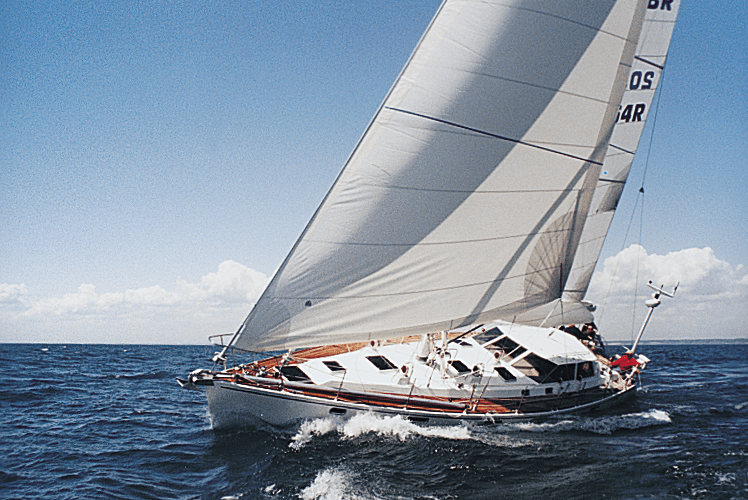 Preparing a sailing rig for going offshore
Preparing a sailing rig for going offshore
For the voyaging sailboat, your rig is your primary propulsion when offshore and should be given top priority when preparing to go offshore. The rig you have been using on weekends may have been good enough to prove the boat’s potential as a voyager, but it may not be good enough for your intended bluewater cruising. It should come as no surprise that the sailing rig must remain standing at all times and under all conditions. A dismasting is the next-worst thing to holing the hull, and neither is something to look forward to when you are thousands of miles at sea. While holing of the hull may be an accident, the blame for a dismasting lies solely on the skipper’s shoulders, so give the entire sailing rig a thorough going-over. If you are not an expert in rigging, get the services of a capable rigging surveyor. Any rig more than 10 years old should automatically be suspect, especially its stainless steel elements.
Mast: Conduct a careful inspection of the mast, looking for corrosion, particularly at the step, and cracks where the mast is spliced or where the spreaders and tangs attach. A mast subject to bending, either controlled or just due to oscillating loads, should be examined at all stress points. Repair or fully replace spreaders if they show any defects.
Standing rigging: Completely disassemble and inspect each element of the standing rigging. Where grade 304 stainless steel elements are faulty, consider changing to a better grade of material such as 316. Increase working dimensions when doing so to account for its slightly lower strength. Carefully re-bed all parts to avoid those irritating leaks that may occur under offshore conditions. Lubricate and safety-wire all moving joints in the rig. Having a shroud or stay come apart at sea can lead to major problems.
Running rigging: Replace all halyards with low-stretch, high-strength synthetic rope that can be spliced. Do not use any rope on board that you cannot splice into a neat, functional line. Learn the art of splicing as part of your preparation. Remove wire halyard winches since they are simply too dangerous to operate. Replace them with self-tailing rope winches that are a welcome “second hand.” Depending on your sailing rig’s design, consider adding a staysail to convert the boat to a cutter rig.
Sails: Your sail inventory and its condition are critical. Make a good selection such as the following:
• Reefable 130 percent to 150 percent genoa
• 100 percent working jib
• Storm jib with proper rigging
• Drifter or asymmetrical spinnaker
• Reefable mainsail (and trysail if mainsail is reefing-limited)
A roller-furling headsail can be a real convenience, but the one you used for weekend cruising may not be durable enough for offshore work. If it isn’t, replace it or do without it. If it is, inspect and refurbish it to increase its lifetime.
Replace the sheets and install sturdier sheet leads. Also, and this is a necessity, carry an old-fashioned hank-on replacement headsail for the time when the roller-furling packs up due to age or storm damage.

